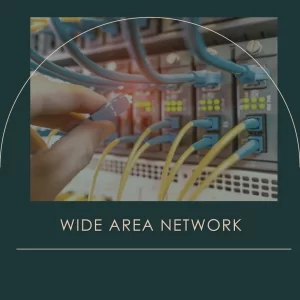Full Form of NASA: Why Is NASA The Most Exciting Space Agency?

NASA stands for the National Aeronautics and Space Administration, is an agency of the United States Federal Government, initially established in 1958 with a mandate to “Foster aeronautics research,” “Support aeronautical and space science,” “Explore space,” and “Pursue aeronautics technology.”
NASA is the largest and most exciting space agency in the world. They have paved the way for many advances in science and technology, but we still know very little about them.
NASA has put people and spacecraft into Earth orbit, traveled to the Moon, visited dozens of planets in our solar system, sent robotic missions to other stars, and created a global network of tracking stations.
There are many reasons why the United States of America’s National Aeronautics and Space Administration is one of the most exciting space agencies, with programs such as the Apollo Program, Mercury Program, and Mars Exploration Program being some of its most notable contributions to humanity. NASA’s mission statement is “to explore space,” It does this by engaging in scientific research and technology development for aeronautics, aerospace medicine, Earth science, human-computer interaction, and planetary science.
What is the Full Form of NASA?
NASA is an acronym for the National Aeronautics and Space Administration.
Why is NASA the most exciting space agency?
NASA is known for its impressive achievements in space exploration, from landing astronauts on the Moon to sending probes beyond our solar system. But what makes NASA so exciting? Here are ten reasons:
1. NASA’s missions constantly push the boundaries of science and technology. For example, the Curiosity rover has been exploring Mars since 2014, using cutting-edge technologies such as radiation protection and autonomous driving.
2. NASA’s missions are inspiring and motivating. For example, when we see pictures of people walking on the surface of another planet, it gives us a sense of hope for the future and demonstrates that anything is possible.
3. NASA’s missions always have a human factor at their core. For example, hearing about a team of brave astronauts coming home after a long journey in space makes us feel proud to be part of the human race.
4. NASA’s missions constantly demonstrate our ability to cooperate and work together to achieve common goals. For example, when the International Space Station was built, it was made up of contributions from many countries and agencies working together as one team.
5. NASA’s missions are making a real difference. For example, the Hubble Space Telescope has given us valuable insight into planets such as our own and their atmospheres, while the Curiosity Rover is helping scientists to understand Mars better.
6. NASA’s missions inspire us to follow in their footsteps and believe that anything is possible. For example, when Neil Armstrong took his first steps on the moon in 1969, he was just one of the millions of people worldwide who were inspired by what they had seen.
7. NASA’s missions allow us to discover new things about ourselves and our planet. For example, we now know that Mars once had water flowing across its surface and that it could have supported life like the early Earth did (likewise for Venus).
8. Nasa’s missions are making us proud of our heritage and encouraging people to appreciate past achievements. For example, it’s a significant boost for small businesses when they see their work featured on TV or in newspapers!
9. NASA’s missions allow us to show off what we can do as a global community. We can all be proud that we’re not just dependent on one country or one part of our planet for our vital space technology.
10. The most exciting thing about Nasa is that we can go into space ourselves, whether it’s to visit Mars or explore Saturn with Cassini and other spacecraft – or even use technology to help improve lives back here on Earth!
The History and Origin of NASA
NASA was founded by the US government in the late 1950s to conduct civilian space exploration and aeronautical research. Since its founding, NASA has been a key player in developing space technology, scientific studies, and exploring the cosmos.
When astronaut Alan Shepard became the first American to journey to space in 1961, it was one of NASA’s most significant turning points. Throughout the decade, NASA’s manned spaceflight program made progress. It reached its pinnacle with the momentous Apollo 11 mission in 1969, during which astronauts Buzz Aldrin and Neil Armstrong became the first to walk on the moon.
NASA made many ground-breaking discoveries in the years that followed, including the start of the Space Shuttle program in 1981, the installation of the Hubble Space Telescope in 1990, and the Mars Rover missions in the twenty-first century. NASA has proven its dedication to furthering science, and cosmological exploration, and pushing the limits of human knowledge and understanding. This is proven through these and several other accomplishments.
What is the NASA’s Vision, Mission, and Goals?
NASA is the most exciting space agency because it has a vision, mission, and goals. The vision is to explore the solar system and protect Earth from harmful space objects. The mission is to achieve these goals by conducting research, developing technology, and making advances in exploration. The goals are to enable human exploration of Mars and other destinations in the solar system, protect Earth from potential space threats, and maintain U.S. leadership in space exploration.
Who is Heading NASA?
NASA is led by an administrator the President of the United States appoints. The current Administrator is Jim Bridenstine. The Administrator oversees NASA’s overall mission and sets policy for the agency. They also appoint agency heads, who lead their respective divisions within NASA.
NASA’s contribution to humanity?
Humanity owes a lot to NASA. If it weren’t for NASA, we would not have been able to travel to the moon, explore other planets, or learn about the universe. NASA has made countless contributions to humanity and continues to do so today. Here are just a few of the most exciting ones:
1. NASA has helped us travel to the moon and explore its surface.
2. NASA’s space missions have helped us learn more about the planets in our solar system and beyond.
3. NASA’s Earth science research has helped us understand our planet better and protect it from environmental threats.
4. NASA’s technology development has allowed us to build new spacecraft and advance our understanding of spaceflight.
All of these contributions have made humanity a better species and paved the way for even more amazing things in the future!
What are the Eligibility Requirements to join NASA?
To be eligible to join the National Aeronautics and Space Administration (NASA), you must meet specific requirements. These requirements vary depending on the position you are applying for. Still, generally, you will need a college degree, experience in either science, technology, engineering, or math (STEM), and a good record of public service.
You may also be required to pass a physical examination and a background check. If you are interested in working for NASA as a civilian employee, you will also need to take the Civil Service Test.
If you are interested in working for NASA as an astronaut, you must meet additional eligibility requirements. These requirements vary depending on the type of astronaut you are applying for. Still, you will generally need at least five years of experience in spaceflight or advanced planning for future spaceflight missions.
Past and future programs of NASA
NASA is one of the most exciting space agencies because of its past and future programs. Some of NASA’s past programs include the Apollo moon landing, the Space Shuttle, and the James Webb Space Telescope. One of NASA’s future programs is the Orion spacecraft, which will be used to explore deep space.
NASA’s Mission and Objectives
NASA’s purpose is to develop science, technology, aeronautics, and space exploration for humanity. The organisation’s goals are to advance human knowledge, encourage aeronautical research, explore and study the universe. It also creates technology that enhances life on Earth and in other planetary systems.
Space exploration is one of NASA’s primary areas of interest. This includes launching manned missions and probes to investigate our solar system and other planetary systems. Aeronautics research conducted by the organisation strives to advance aviation technology, including improvements to aircraft safety, noise reduction, and fuel efficiency.
As part of its mission to learn more about the natural world and our place in the cosmos, NASA also conducts scientific research in a number of fields. These include astrophysics, earth science, and climate change. The agency also creates cutting-edge technologies to advance space exploration and better human life on Earth, including robots, materials science, and artificial intelligence.
NASA’s overall goals are to improve human knowledge, deepen our understanding of the cosmos, and create technology that solves world problems.
What is the difference between ISRO and NASA, and who is better and why?
ISRO is the Indian Space Research Organization, while NASA is the National Aeronautics and Space Administration.
ISRO was founded in 1974, while NASA was founded in 1958. The main difference between these two agencies is that ISRO focuses more on space research and development, while NASA focuses more on space exploration and spaceflight.
Regarding space technology, ISRO has a clear lead over NASA. For example, India’s first satellite, Aryabhatta, was launched by NASA in 1975, but India’s first satellite, Satish Dhawan, was launched by ISRO in 1982. Furthermore, India’s first communications satellite, Ku-band (1.5GHz), was launched by ISRO in 1997, and India’s first remote sensing satellite, Cartosat-2 Series (CCS-2), was launched by ISRO in 2007.
Another important difference between these two agencies is that NASA has been involved in many successful space missions while ISRO has not been as successful. For example, the Hubble Space Telescope was built by NASA, but ISRO built the Faradays. The Mars Orbiter Mission (MOM) was a joint project between NASA and ISRO, but the Mangalyaan was a private initiative. ISRO is not only an agency to be taken lightly but also an agency that has done many remarkable things.
The cooling of the global economy has dramatically affected the space industry. The private companies that have funded most of these space projects have scaled back their plans, and government-backed agencies such as ISRO are the only ones that can continue or even increase this trend. The scope for technological advancement in space exploration, weaponry, and other industries is going to expand, and it is solely because of ISRO’s success in this field and its ability to work with foreign planetary agencies such as NASA that India will be able to achieve its goals in intergalactic exploration.
NASA’s Accomplishments
NASA has accomplished a great deal and in many different areas, from manned moon missions to ground-breaking scientific studies. The 1969 Apollo moon landing and the Hubble Space Telescope, which completely changed how we view the universe, are two of NASA’s most significant accomplishments.
However, NASA has also achieved many lesser-known accomplishments that have had a significant impact on science and technology. These include the development of advanced aircraft designs, such as the X-15 hypersonic plane. In addition, they include ground-breaking research in fields such as earth science, climate change, and materials science.
NASA’s accomplishments demonstrate the organization’s dedication to expanding human understanding and pursuing science and technology limits. People all throughout the world are in awe of these accomplishments, which are proof of human creativity and innovation.
Conclusion
NASA is one of the most exciting space agencies and for a good reason. They have consistently pushed the boundaries of human exploration and discovery, from landing on the moon to sending astronauts to Mars. Their work inspires us all to look beyond our everyday lives and dream of what we can achieve with science and technology at our disposal.
Hey kids, how much did you like Full Form of NASA? Please share your view in the comment box. Also, please share this story with your friends on social media so they can also enjoy it, and for more such stories, please bookmark storiespub.com.





